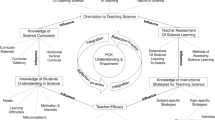Abstract
This paper describes the design, implementation, and results of an NSF funded Summer Academy from 2016 to 2018, which engaged, on an annual basis, 30 to 60 rising 10th and 11th grade high school science students in an innovative, technology-enriched Project Based Learning (PBL) environment. This Academy emphasized how tech gadgets work and the impact that technology can have on improving communities by immersing students in the exploration of one such device that is a growing phenomenon, the “aerial drone.” In this Academy, the students learned various operations of the drone through Python programming language, and some cybersecurity issues and solutions. The student teams, under the guidance of diverse mentors, comprehensively fortified their STEM problem-solving skills and critical thinking. Both formative and summative evaluations for this Academy showed that it helped students improve their critical thinking ability and motivated them to pursue careers in STEM-related disciplines, specifically in information technology and cybersecurity areas.
Similar content being viewed by others
References
Abdelmoula, M., Chakroun, W., & Akrout, F. (2015). The effect of sample size and the number of items on reliability coefficients: Alpha and rho: A meta-analysis. International Journal of Numberical Methods and Applications, 13(1), 1–20. https://doi.org/10.17654/IJNMAMar2015_001_020.
Bujang, M. A., Omar, E. D., & Baharum, N. A. (2018). A review on sample size determination for Cronbach’s alpha test: A simple guide for researchers. Malaysian Journal of Medical Sciences, 25(6), 85–99. https://doi.org/10.21315/mjms2018.25.6.9.
Burrell, D. N. (2018). An exploration of the cybersecurity workforce shortage. International Journal of Hyperconnectivity and the Internet of Things, 2(1), 29–41.
Cervantes, H., Kazman, R., Ryoo, J., Choi, D., & Jang, D. (2016). Architectural approaches to security: Four case studies. Computer, 49(11), 60–67.
Chen, P., Hernandez, A., & Dong, J. (2015). Impact of collaborative project-based earning self-efficacy of urban minority students in engineering. Journal of Urban Learning Teaching and Research, 11, 26–39.
Cheng, L., Liu, F., & Yao, D. (2017). WIREs data mining and knowledge discovery, 7(e1211), 1–14.
Cohen, N., Hulvey, R. Mongkolnchaiarunya, J. Novak, A., Morgus, R. & Segal, A. (2017). Cybersecurity as an engine for growth: Policy paper. New America.
Funk, C., & Parker, K. (2018). Women and men in stem often at odds over workplace equity. Retrieved 2020-09-02, from https://www.pewsocialtrends.org/2018/01/09/women-and-men-in-stem-often-at-odds-over-workplace-equity/
Gainor, K. A., & Lent, R. W. (1998). Social cognitive expectations and racial identity attitudes in predicting the math choice intentions of black college students. Journal of Counseling Psychology, 45(4), 403–413.
Garcia-Reid, P., Reid, R., & Peterson, N. A. (2005). School engagement among Latino youth in an urban middle school context: Valuing the role of social support. Education and Urban Society, 37(3), 257–275.
Graff, J. (2012). The ps-drone-api: Programming a parrot ar.Drone 2.0 with python - the easy way. Retrieved from www.playsheep.de/drone
Gudivada, V., Ramaswamy, S., & Srinivasan, S. (2018). In L. Deka & M. Chowdhury (Eds). Transportation Cyber-Physical Systems (pp. 173–200). New York: Elsevier.
Hinton, P. R., Brownlow, C., McMurray, I., & Cozens, B. (2004). SPSS explained. New York: Routledge.
Kendricks, K., Nedunuri, K. V., & Arment, A. (2013). Minority student perceptions of the impact of mentoring to enhance academic performance in STEM disciplines. Journal of STEM Education: Innovations and Research, 14(2), 38–46.
Krajcik, J. S., & Blumenfeld, P. (2006). Project-based learning. In R. K. Sawyer (Ed.), The Cambridge handbook of the learning sciences. New York: Cambridge.
Lachney, M., Babbitt, W., Bennett, A., & Eglash, R. (2019). Generative computing: African-American cosmetology as a link between computing education and community wealth. Interactive Learning Environments, 1-21.
Liu, M., Hsieh, P., Cho, Y., & Schallert, D. (2006). Middle school students’ self-efficacy, attitudes, and achievement in a computer-enhanced problem-based learning environment. Journal of Interactive Learning Research, 17(3), 225–242.
Liu, M., Horton, L., Olmanson, J., & Toprac, P. (2011). A study of learning and motivation in a new media enriched environment for middle school science. Educational Technology Research and Development, 59(2), 249–265.
Marx, R. W., Blumenfeld, P. C., Krajcik, J. S., Fishman, B., Soloway, E., Geier, R., & Tal, R. T. (2004). Inquiry-based science in the middle grades: Assessment of learning in urban systemic reform. Journal of Research in Science Teaching, 41(10), 1063–1080.
Modi, K., Schoenberg, J., & Salmond, K. (2012). Generation stem: What girls say about science, technology, engineering, and math. In A Report from the Girl Scout Research Institute. New York: Girl Scouts of the USA.
Mouza, C., Marzocchi, A., Pan, Y., & Pollock, L. (2016). Development, implementation, and outcomes of an equitable computer science after-school program: Findings from middle-school students. Journal of Research on Technology in Education, 48(2), 84–104.
Museus, S. D., Palmer, R., Davis, R., & Maramba, D. C. (2011). Special issue: Racial and ethnic minority students’ success in STEM education. ASHE Higher Education Report, 36(6), 1–140.
Nandakumar, N., & Lakshmi, L. (2017). Emerging and upcoming threats in cyber security in 21 century. A Monthly Journal of Computer Science and Information Technology, 6(2), 107–118.
National Science Board (2018). Science and Engineering Indicators 2018. Alexandria, VA: National Science Foundation (NSB-2018-1).
Noonan, R. (2017). Women in STEM: 2017 update. ESA issue brief# 06–17. US Department of Commerce.
Nugent, G., Barker, B. S., Grandgenett, N., Adamchuk, V. I. (2010). Impact of robotics and geospatial technology interventions on youth STEM learning and attitudes, Teacher Education Faculty Publications, 33. Retrieved from https://digitalcommons.unomaha.edu/tedfacpub/33
Nunnally, J. C., & Bernstein, I. H. (2017). Psychometric theory (3rd ed.). New York: McGraw-Hill.
Office of Management and Budget (2016). Annual report to congress: Federal information security management act. Washington D.C. Retrieved from https://www.whitehouse.gov/sites/whitehouse.gov/files/omb/assets/egov_docs/final_fy14_fisma_report_02_27_2015.pdf
Palmer, R. T., Davis, R. J., & Maramba, D. C. (2011). The impact of family support for African American males at an historically Black University: Affirming the revision of Tinto's theory. Journal of College Student Development, 52(5), 577–593.
Pintrich, P. R., Smith, D. A. F., Garcia, T., & Mckeachie, W. (1993). Reliability and predictive validity of the motivated strategies for learning questionnaire (mslq). Educational and Psychological Measurement, 53(3), 801–813.
Rivet, A. E., & Krajcik, J. S. (2004). Achieving standards in urban systemic reform: An 15 example of a sixth grade project-based science curriculum. Journal of Research in Science Teaching, 41(7), 669–692.
Rouquette, A., & Falissard, B. (2011). Sample size requirements for the internal validation of psychiatric scales. International Journal of Methods in Psychiatric Research, 20(4), 235–249. https://doi.org/10.1002/mpr.352.
Russell, M. L. (2014). Motivation in the science classroom: Through a lens of equity and social justice. In M. M. Atwater, M. Russell, & M. Butler (Eds.), Multicultural science education: Preparing teachers for equity and social justice (pp. 103–116). New York: Springer.
Sadler, P. M., Sonnert, G., Hazari, Z., & Tai, R. H. (2012). Stability and volatility of STEM career interest in high school: A gender study. Science Education, 96(3), 411–427.
Sinatra, G. M., Mukhopadhyay, A., Allbright, T. N., Marsh, J. A., & Polikoff, M. S. (2017). Speedometry: A vehicle for promoting interest and engagement through integrated STEM instruction. Journal of Educational Research, 110(3), 308–316.
Singh, K., Granville, M., & Dika, S. (2002). Mathematics and science achievement: Effects of motivation, interest, and academic engagement. The Journal of Educational Research, 95(6), 323–332.
State of Computer Science Education (2019). Equity and diversity. Retrieved from https://advocacy.code.org/2019_state_of_cs.pdf
Thomas, J. W. (2000). A review of research on project-based learning. San Rafael: The Autodesk Foundation.
Unfried, A., Faber, M., & D.S., S., & Wiebe, E. (2015). The development and validation of a measure of student attitudes toward science, technology, engineering, and math (s-stem). Journal of Psychoeducational Assessment, 33(7), 622–639.
Varma, R. (2018). U.S. science and engineering workforce: Underrepresentation of women and minorities. American Behavioral Scientist, 62(5), 692–697.
Williams, M., & Linn, M. C. (2002). Wise inquiry in fifth grade biology. Research in Science Education, 32(4), 415–436.
Yurdugul, H. (2008). Minimum sample size for Cronbach’s coefficient alpha: A Monte-Carlo study. H. U. Journal of Education, 35, 397–405.
Acknowledgements
This research was supported in part by National Science Foundation grants #1761735,
Author information
Authors and Affiliations
Corresponding author
Ethics declarations
Disclosure of Potential Conflicts of Interest
#1723586, #1663350, #1614845, National Institute of Health grant NIH TU CBR/RCMI #U54MD007585, and a grant from Rockwell Collins, U.S.A. Any opinions, findings, and conclusions or recommendations expressed in this material are those of the authors and do not necessarily reflect the views of the funding agencies. We have no potential conflict of interest.
Ethical Approval
All procedures performed in studies involving human participants were in accordance with the ethical standards of the institutional and/or national research committee (Tuskegee University Human participant Review Committee, Institutional Review Board-IRB # 00001137 + reference number HPRC #110915) and with the 1964 Helsinki declaration and its later amendments or comparable ethical standards.
Informed Consent
Informed consent was obtained from all individual participants included in the study.
Additional information
Publisher’s Note
Springer Nature remains neutral with regard to jurisdictional claims in published maps and institutional affiliations.
Rights and permissions
About this article
Cite this article
Bhuyan, J., Wu, F., Thomas, C. et al. Aerial Drone: an Effective Tool to Teach Information Technology and Cybersecurity through Project Based Learning to Minority High School Students in the U.S.. TechTrends 64, 899–910 (2020). https://doi.org/10.1007/s11528-020-00502-7
Published:
Issue Date:
DOI: https://doi.org/10.1007/s11528-020-00502-7




